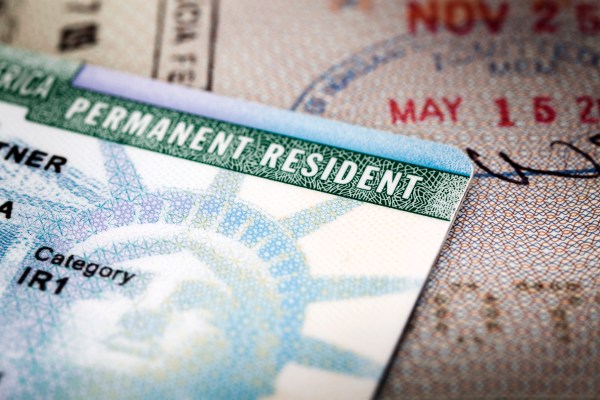Work permit delays disrupt foreign workers’ career plans - 5 minutes read
 Work permit delays disrupt foreign workers’ career plans – TechCrunch
Work permit delays disrupt foreign workers’ career plans – TechCrunchImmigration advocates are rightly fretting over the Trump administration’s newhealth insurance mandateand efforts todismantle the asylum system. But away from the spotlight, another crisis is quietly brewing that could affect virtually every foreign-born STEM (science, technology, engineering, and math) student and worker.
The problem lies inEmployment Authorization Documents (EADs). These work permits, issued by U.S. Citizenship and Immigration Services (USCIS), authorize international students and green card applicants to take jobs. Requests for EADs, known asI-765s, now account formore than a quarter of all formsUSCIS receives. But technological hiccups, staffing shortages, and the pressures of conforming to new immigration policies mean the agency is taking longer and longer to process them. That’s leaving tens of thousands of students and skilled workers unable to work andhundreds of thousands of tech positions unfilledfor months, or even years.
The EAD crisis has been simmering for years but reached a head in early 2017 when officialsscrapped a rulerequiring USCIS to process I-765s within 90 days. Along with an influx of new EAD requests fromDACAandTPSrecipients, that’s led to spiraling delays. In 2015, 23 percent of EAD applications took more than three months to process; by 2018, it had doubled to 46 percent. The average processing time today for non-DACA-related EADs isalmost five months, with over a third of applications takingsignificantly longer— last year,over 118,000 applicationstook more than nine months to process.
That squares with what we’re seeing atBoundless: our internal data show that average EAD wait times have climbed above five months, with many customers waiting eight months or more for work permits. We’re also seeing an enormous disparity among processing facilities, with some USCIS service centers far more clogged than others. At the time of writing, if your I-765 is processed in Texas, for example, you could get your EAD withinthree weeks; if in Vermont, you could waitmore than 17 months, depending on the immigration status you seek.
That adds up to an unpredictable, unfair, and deeply frustrating situation andone more obstaclefor the skilled immigrants that President Donald Trump says he’s trying to attract to the United States. Whether you’re trying to make ends meet while waiting for your green card, seeking a summer job, or hoping to work after graduation, EAD delays can be excruciating — and unless your employer is willing to wait for you, the holdup could cost you your dream job.
So what could you do if you find yourself stuck in EAD limbo? Fortunately, you have options:
Many immigrants file EAD requests as part of their green card applications, even if they’re already authorized to work under visas such as an H-1B or L-1. That’s a smart move: If your current work visa expires, but you’ve been issued an EAD, you’ll be able to keep working until your green card arrives. Still, if your EAD gets delayed, you’ll be glad to know that as long as your originalemployment-based visaremains valid, you can keep working without a problem.
Bear in mind, though, that you won’t be able to renew your existing visa after filing agreen cardapplication. It’s worth applying for your green card as soon as you’re eligible to give you plenty of time before your existing work visa expires.
It’s not impossible for your EAD to slip through the cracks or be sent to the wrong address, so check with USCIS if things are taking too long. Start by checking the processing times for your service center. If you filed your I-765 before the “receipt date for a case inquiry” listed on theUSCIS processing times tool, you canfile an e-Requestor call 1-800-375-5283 for an update.
In some cases, you can also ask USCIS toexpedite your I-765. This is only available in certain circumstances, such as if delays are due to USCIS error or if you or your prospective employer would otherwise suffer major financial losses. Unfortunately, the possibility of losing or delaying acceptance of a job offer isn’t sufficient grounds for expediting an application.
Source: TechCrunch
Powered by NewsAPI.org
Keywords:
Work permit • TechCrunch • Immigration • Presidency of Donald Trump • Refugee • Financial crisis of 2007–2008 • Science, technology, engineering, and mathematics • Science, technology, engineering, and mathematics • Workforce • Document • Airbus Group • Employment • License • United States Citizenship and Immigration Services • United States Citizenship and Immigration Services • Permanent residence (United States) • Employment • Airbus Group • Fiscal year • Immigration to the United States • United States Citizenship and Immigration Services • George Eads • United States Citizenship and Immigration Services • Texas • Vermont • Immigration • Immigration • Donald Trump • United States • Permanent residence (United States) • Limbo (programming language) • Employment authorization document • Permanent residence (United States) • Travel visa • H-1B visa • L-1 visa • Travel visa • Employment authorization document • Permanent residence (United States) • Permanent residence (United States) • Work permit • Employment authorization document • United States Citizenship and Immigration Services • United States Citizenship and Immigration Services • United States Citizenship and Immigration Services • Employment • Employment •